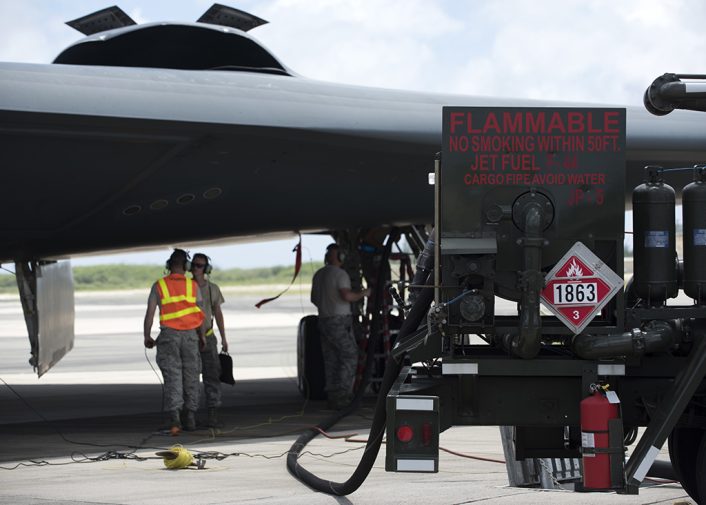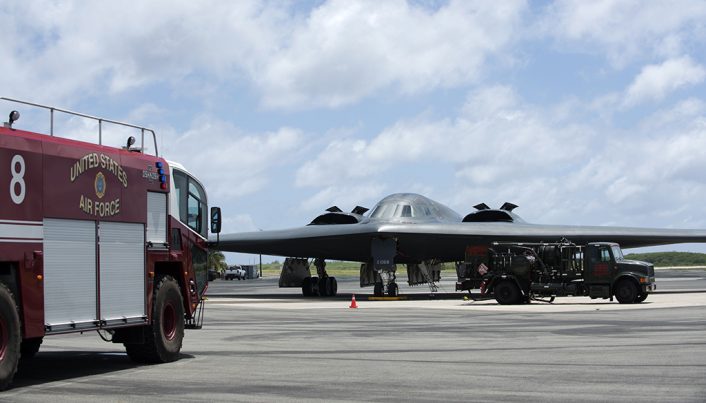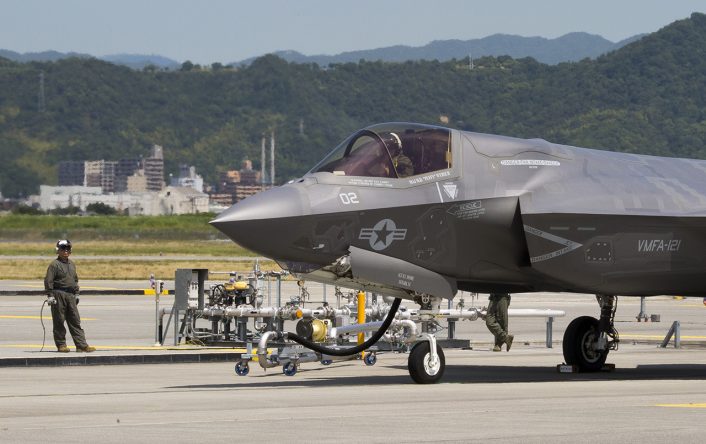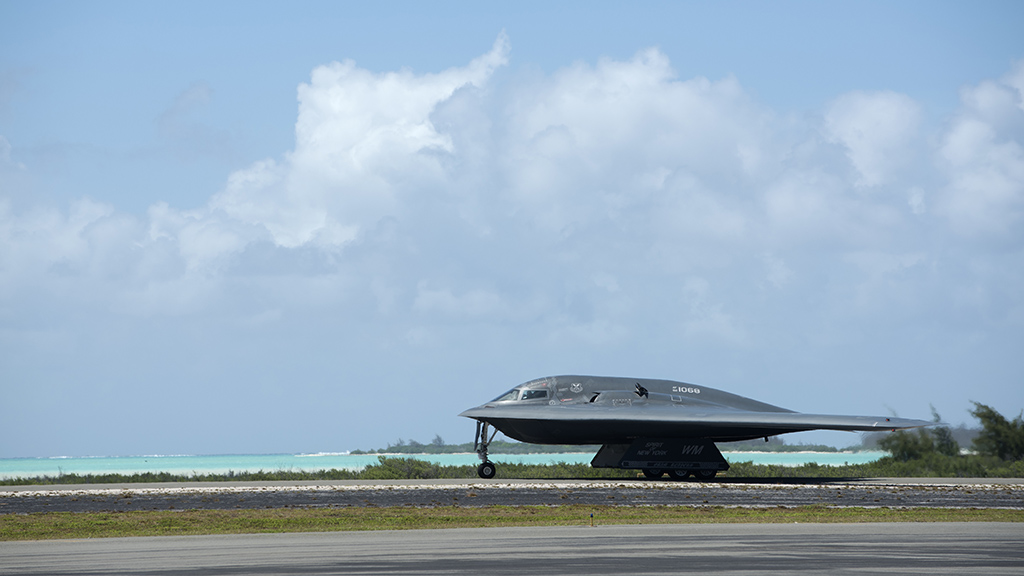Hot-pit refueling is required to operate out of locations with limited support and infrastructures.
On Sept. 14, two U.S. Air Force B-2 Spirit bombers forward deployed to Joint Base Pearl Harbor-Hickam (JBPH-H), Hawaii, conducted a routine training over the Pacific in the vicinity of Hawaii. The B-2s are deployed at JBPH-H from Whiteman Air Force Base, Missouri, in support of the U.S. Strategic Command’s Bomber Task Force. It’s the first deployment of B-2s to JBPH-H, although the aircraft are regularly rotated to the Indo-Pacific region.
During the mission, one of the the B-2s flew to Wake Island, a coral limestone atoll in the mid-pacific, east of Guam, where it conducted hot-pit refueling, a technique in which the aircraft land and refuel, without shutting down the engines.
“Hot-pit refueling allows us to maximize time in the air verses on the ground,” said Lt. Col. Nicholas Adcock, Air Force Global Strike 393rd Bomber Squadron commander in public release. “It saves turnaround time. Practicing this technique helps us ensure our effectiveness as a force and keeps us ready, capable and lethal.”

Hot-pit refueling operations are quite routine for the stealth bat-wing bombers: during long-range missions launched from Whiteman Air Force Base, Missouri, home of the 509th Bomb Wing, hot-pit refueling is also used to perform engine-running crew change activity. In the past, stealth bombers travelling to the UK (for operational purposes or to attend the airshows) have often conducted hot-pit activities on the ground, as happened during a mission to RAF Fairford in June 2015 or in July 2012 during RIAT (Royal International Air Tattoo) airshow.

Needless to say, other aircraft perform hot-pit refueling training. Among them, the U.S. Marine Corps F-35B Lightning II. For instance, F-35B STOVL belonging to Marine Fighter Attack Squadron (VMFA) 121 conducted hot pits at Marine Corps Air Station Iwakuni, Japan, in June 2017. The same squadron had started training for this kind of operation at a deployment airbase years before: on Aug. 7, 2013, two F-35B from VMFA-121 (based at MCAS Yuma back then) flew to MCAS Miramar to perform the first F-35B hot pit refuel at the airbase near San Diego, California.














